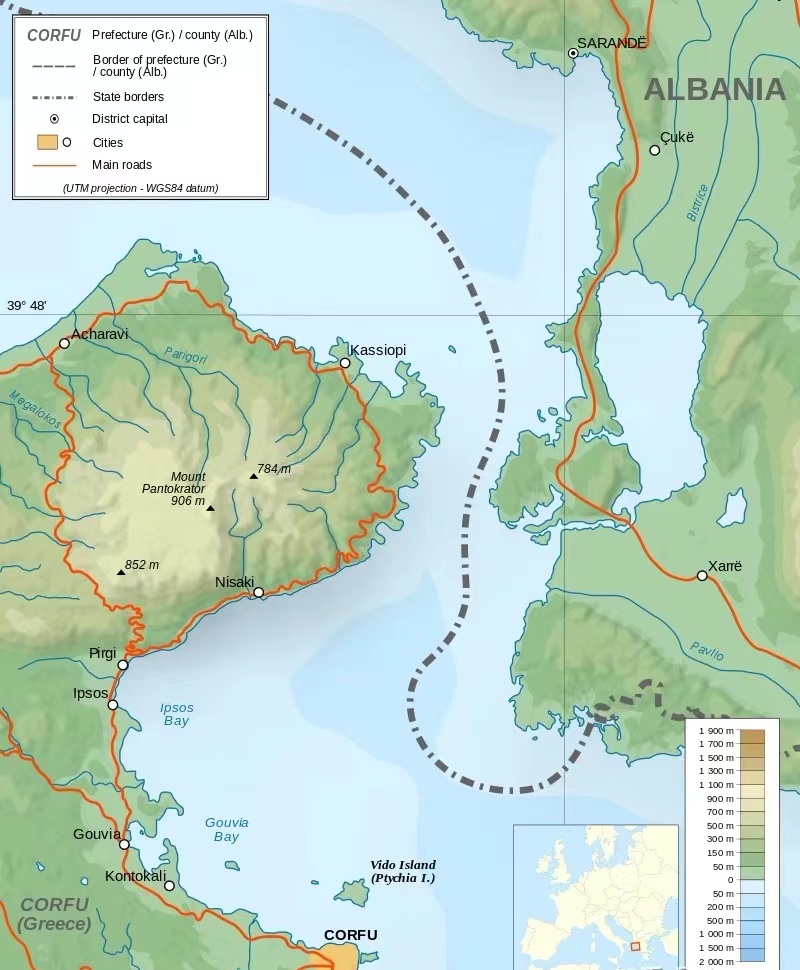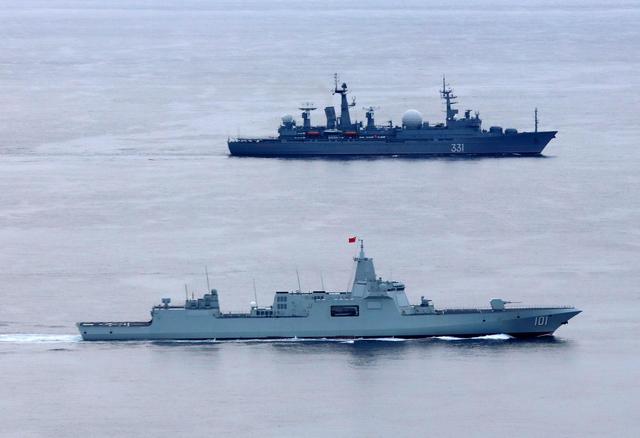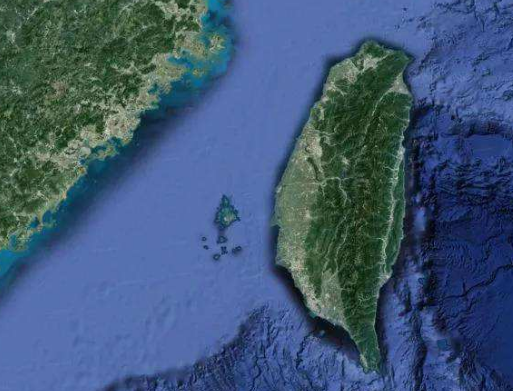Located between China’s mainland and Taiwan, the Taiwan Strait is a busy channel connecting the East and the South China Sea. Amid increasing tension between the two sides of the strait, some countries sent their naval forces to show their presence in the Taiwan Strait to interfere with the process of China’s reunification. The passage of foreign warships in the Taiwan Strait has also drawn wide attention from the media and the public. In the present author’s view, a distinction should be made between the legality of the passage and its political implication. What is the legal regime of straits in international law? What is the legal status of the Taiwan Strait? Do foreign navy vessels have the right to navigate through it? This article provides a brief overview of these questions.
The straits hold the sea lanes connecting the oceans and the regional seas. The passage of foreign vessels through the strait is essential to the sea routes for international trade. This guarantee is also of great military-strategic importance for naval powers with the ability to launch themselves far out to sea. Freedom of navigation on the high seas connotes navigation on the high seas and implies the corresponding right of passage through different parts of the sea. The right of passage of foreign vessels, including warships, through strait used for international navigation, should be understood as an integrated part of the freedom of navigation on the high seas.
The first case before the International Court of Justice (ICJ) is a case concerning the passage of foreign naval vessels through a strait used for international navigation -- the Corfu Channel Case. The Corfu Channel is located between Greece and Albania, connecting the high seas, and is a strait used for international navigation. At its narrowest point, the Corfu Channel is less than one nautical mile. Even from the point of view of the countries that claimed three nautical miles of territorial waters at that time, the Corfu Channel was undoubtedly a strait falling within the territorial sea of the bordering states. In the Corfu Channel case, the U.K.’s navy fleet passed through the Corfu Channel several times to Greece. Considering the contemporary international relations and tension between Albania and Britain in the region, one may argue that the purpose of the passage of the UK navy vessels was not so simple, if not yet a reflection of its gunboat diplomacy.
Albanian water was part of the Corfu Channel. While passing through the strait, the British warship struck mines and was damaged in Albanian territorial waters. A central legal issue in the case was whether U.K.’s warships enjoy the right of passage through the Corfu Channel -- a strait used for international navigation but falls within Albanian territorial waters. In its Judgment of 9 April 1949, the ICJ avoided the generic question on warships’ innocent passage in coastal states’ territorial waters. However, it explicitly announced that the foreign warships enjoy the right of innocent passage through the territorial sea forming a strait used for international navigation and that the boarding state shall not suspend such innocent passage (Corfu Channel (U.K. v. Alb.), Judgment, 1949 I.C.J. 28 (9 April)). This innocent passage, also known as “extended innocent passage,” is reflected in the 1958 Convention on the Territorial Sea but is limited to the passage through strait used for international navigation (Article 16.4 of the Convention on the Territorial Sea and the Contiguous Zone, 1958).

the Corfu Channe
The 1982 United Nations Convention on the Law of the Sea (hereinafter referred to as “the Convention”) set the maximum width of the territorial sea to 12 nautical miles. As a result, more than one hundred straits used for international navigation will be entirely covered by the expanded territorial sea. For naval powers with nuclear-powered submarines and aircraft carriers, maintaining the stealth of submarines through the straits is essential to the effectiveness of the nuclear deterrent provided by the submarine-launched ballistic missile. At the same time, overflight with the aircraft carriers is also critical to the safety of the fleets passing through the strait. Therefore, the existing “extended innocent passage” will not fully satisfy the interests of these states in passing through the straits because, in any way of innocent passage, submarines are required to navigate on the surface and show their flags, and, overflight over the territorial sea is prohibited. The freedom of navigation and overflight described above prior to the expansion of the territorial sea of the boarding states, on the other hand, is conclusive because high seas routes are left in the strait when the three-nautical-mile territorial sea regime is applied.
A new strait passage regime was created as a quid pro quo for expanding the territorial sea to meet the needs of superpowers at sea. Under the leadership of the United States and the Soviet Union, the Convention responded to this in Part III, “Straits used for international navigation” (Art. 34-45). The core of Part III is the “transit passage” regime in Section II. The transit passage regime allows “the freedom of navigation and overflight solely for the purpose of continuous and expeditious transit of the strait.” It does not require submarines to navigate on the surface and to show their flags. This “transit passage” applies to “straits which are used for international navigation between one part of the high seas or an exclusive economic zone and another part of the high seas or an exclusive economic zone.” The context, as well as the object and purpose of Part III, suggests that it only applies to “straits formed entirely by territorial waters of the bordering state(s).” In particular, Art.36 of the Convention provides that the right of transit passage does not apply to a strait that contains a route through the high seas or through an exclusive economic zone, provided that the route should be of similar convenience with respect to navigational and hydrographical characteristics. Article 36 provides:
This Part does not apply to a strait used for international navigation if there exists through the strait a route through the high seas or through an exclusive economic zone of similar convenience with respect to navigational and hydrographical characteristics; in such routes, the other relevant Parts of this Convention, including the provisions regarding the freedoms of navigation and overflight, apply.
The freedom of navigation and overflight in the routes of the high seas or exclusive economic zone in the straits as mentioned above should be at least no less than the rights and freedoms enjoyed by foreign warships and aircraft in exercising the right of transit passage, including the right of passage without prior notification and authorization, the normal submergence of submarine and overflight of aircraft. In contrast to “transit passage,” passage through “routes” under Article 36 does not even require “continuous and expeditious transit.” However, the territorial waters in such straits are no different from other parts of territorial waters, in which only the right of innocent passage applies. Under Art.36 of the Convention, warships may encounter problems if they choose not to use the said “route” but to pass through the territorial waters of that strait.” The interpretation of the Convention and state practice is controversial as to whether the foreign warships hold the right of innocent passage in a regular territorial sea.
On the one hand, straits under Art.36 of the UNCLOS cater to the concerns of naval powers, who can exercise freedom of navigation through the high sea/EEZ route in the strait not inferior to the right of transit passage. On the other hand, the traditional “innocent passage” regime is retained in the territorial waters of the bordering states so that the coastal states can request submarines to navigate on the suffice of the water and show their flags, and prohibit overflight. It explains policy consideration for Japan to deliberately claim a territorial sea up to 3 nautical miles in its Law on the Territorial Sea (Law No. 30 of 2 May 1977) for the five straits used for international navigation (under the UNCLOS, the maximum breadth of the territorial sea is 12 nautical miles). By creating a corridor of the high sea/EEZ in the middle of these straits, Japan maintains restrictions on the navigation of submarines and overflight of aircraft within three nautical miles of the straits.
As described at the beginning, the Taiwan Strait is a strait used for international navigation as it connects the East China Sea and the South China Sea (geographical criterion) and is used by a large number of foreign ships for navigation (functional criterion). Although the Taiwan Strait locates between China’s mainland and the Island of Taiwan, the fact that both sides of the strait belong to the same country does not affect its legal status as a strait used for international navigation. In fact, the Tsugaru Strait, through which Russia and China have carried out joint naval patrols this month, is also located between Japan’s islands of Honshu (Aomori Prefecture) and Hokkaido. The Tsugaru Strait is also uncompromisingly a strait used for international navigation in terms of the two criteria.

the China-Russia joint naval exercise Joint Sea-2021 Photo: Xinhua News Agency
The Taiwan Strait is about 245 nautical miles long and about 85 to 105 nautical miles wide. The islands in the Taiwan Strait are close to the coasts. Therefore, whether a normal or straight baseline is adopted, the Taiwan Strait will not be formed entirely by territorial waters. It nevertheless leaves a corridor of high seas or exclusive economic zone through the strait. The regime of transit passage shall not apply to Taiwan Strait unless the corridor of high seas or exclusive economic zone in the Taiwan Strait is denied of “similar convenience with respect to navigational and hydrographical characteristics” under Art.36 of the Convention. However, since transit passage allows submarines to pass submerged and guarantees overflight rights of airplanes throughout the strait coast to coast (including the portion immediately off the coasts), the application of the transit passage regime in the Taiwan Strait is not very preferable to China from a security perspective. It is never reported that the foreign vessels have complained about the navigational and hydrographical inconvenience of the high sea/EEZ corridor when they navigate it, passing through the Taiwan Strait. In conclusion, if the Taiwan Strait is regarded as a strait under Art.36 of the Convention, there should be out of the question in international law for foreign warships when they use the corridor of high seas or exclusive economic zone passing through the Taiwan Strait.

the Taiwan Strait
The legality of passage through the Taiwan Strait is one thing, using the passage for political maneuvering and provocation is another. U.K.’s warships passage through the Corfu Channel, no doubt they held such right of extended innocent passage as the Court announced, was complicated with U.K.’s practicing gunboat diplomacy and causing unrest. The passage of British warships has become an issue for discussion in the UN Security Council. The recent passages of foreign warships through the Taiwan Strait with blatant remarks deserve China’s attention on the timing, frequency, and manner of such passages. We shall condemn the passages as they undermine the peace and stability of the Taiwan Strait.

